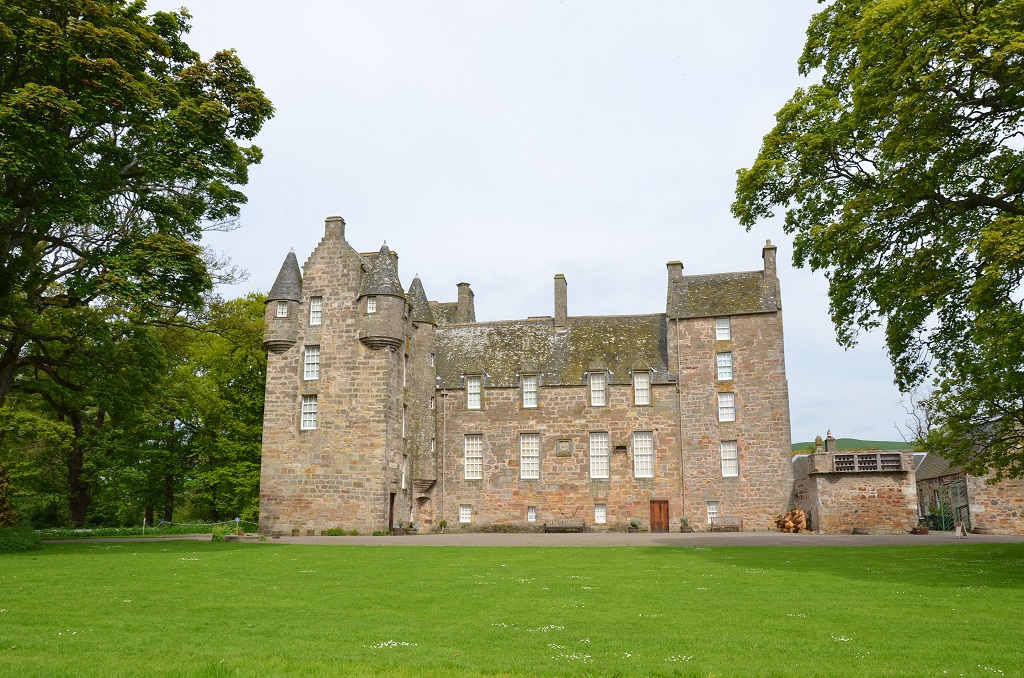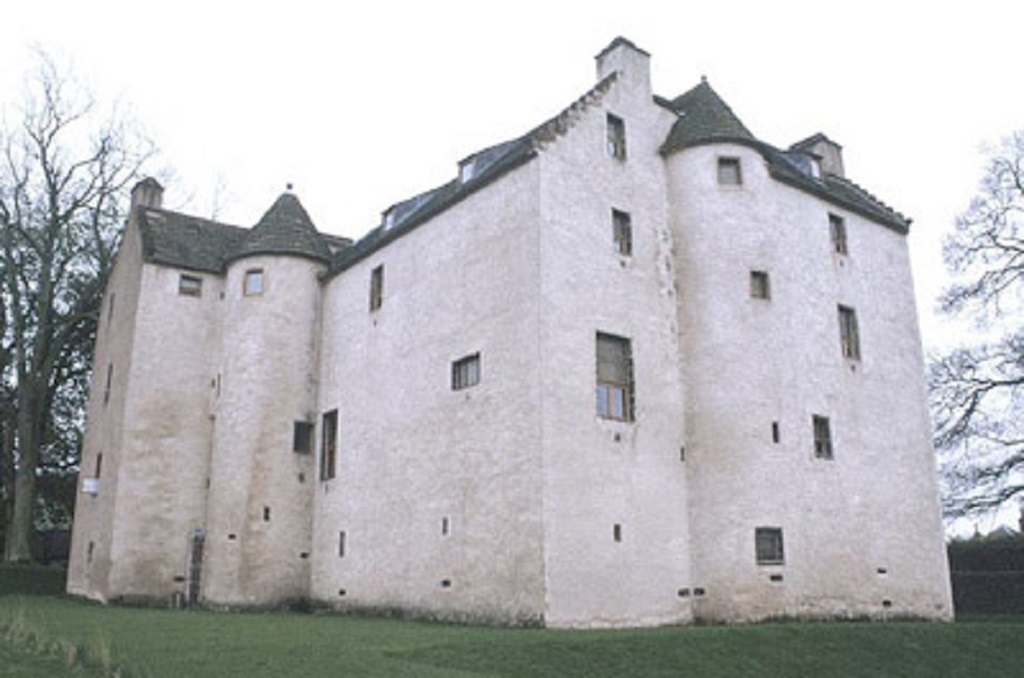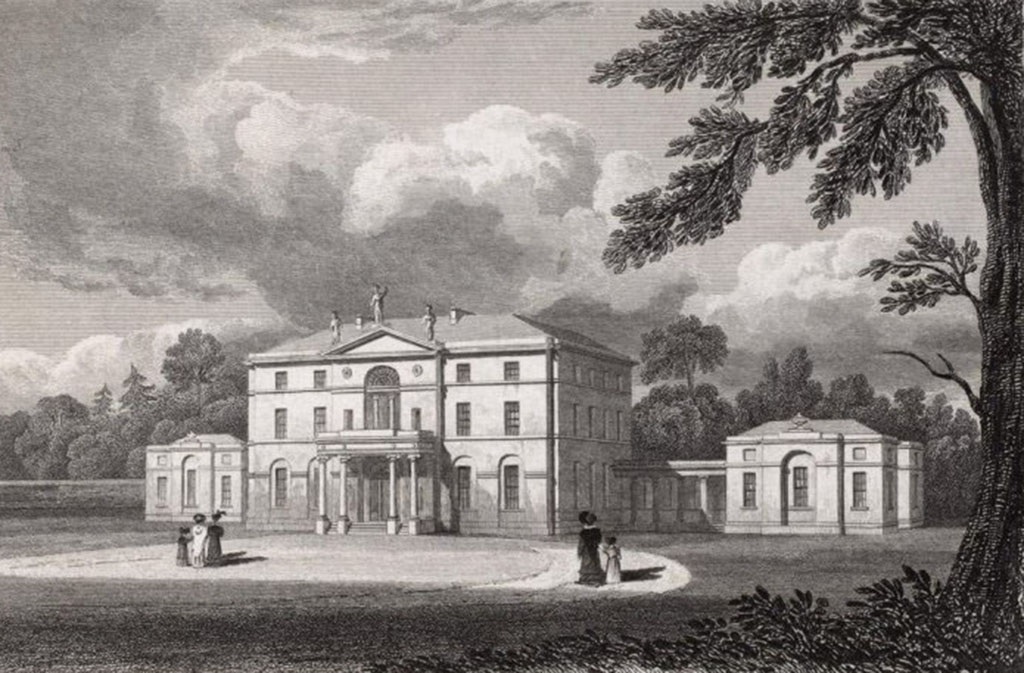Scots have been dispersed throughout the world – taking our names and culture with them.
So many of us look into our roots, to find out who we are and where we came from, and many Scots overseas delight in finding out about their ancestors.
Here we present 10 places that all members of the Clan Oliphant should visit in their lifetime.
1. Ardblair Castle
The castle was originally acquired by the Blairs of Balthavock in 1399 by order of a grant from David II King of Scots. However, the property passed from the Robertson family, through marriage, to the Oliphants of Gask in 1792. There was a condition attached though that the name Blair should be incorporated into the surname. The house remains the property of the Blair Oliphant branch of the family and many Jacobite relics, portraits and possessions were taken to Ardblair from Gask during the 20th century. Today it is a treasure trove of Oliphant and Jacobite memorabilia. It contains the largest collection of Oliphant heirlooms and portraits today.
2. Aberdalgie Parish Church
Although the church was built in 1773, it houses the funerary vault of Sir William Oliphant of Aberdalgie who died in 1330. Installed in around 1365, the vault was previously outdoors in the church yard but was moved inside the church in the early twentieth century by the 31st Chief of Clan Oliphant, General Sir Laurence ‘Bully’ Oliphant. The vault’s unusual blueish-grey Tournai marble was recently conserved as few such continental medieval carved stones survive in Scotland.
3. Newton of Condie
The Oliphant ancestral seat at Newton of Condie in Strathearn was largely destroyed by fire in the 1860s and the former mansion is now a ruin. Although much of the family silver was saved from the flames, none of the paintings, some over 500 years old, survived. The original tower-house dated from just after the mid-16th century, but by the late 17th/ early 18th century, a large extension was made in the form of an L-shaped building, attached to the west side of the house. Finally in about 1830 these buildings were surrounded by additions to the south east and south west by the erection of a mansion on the north side.
4. Muirhouse
Muirhouse was given to Sir William Oliphant of Aberdalgie along with Cramond Regis by Robert the Bruce in compensation for lands taken in Kincardineshire. William was a loyal supporter of Robert the Bruce his son Sir Walter married Bruce’s youngest daughter Elizabeth. Muirhouse remained in the Oliphant family until 1631 when it was sold on to Edinburgh apothecary John Hamilton. The subsequent castle and house built on the site were demolished in favour of public housing built in 1953 and the former drive to the old house now lies under Muirhouse Parkway.
5. Kellie Castle

Kellie Castle
Kellie Castle was passed onto the Oliphant family from the Siwards in around 1360. However Laurence, 5th Lord Oliphant, dissipated all the Oliphant estates in Scotland to blank out the famous name. Sir Robert Lorimer, the Scottish architect, and his family were the last people to live in Kellie before the castle and its gardens were sold to the National Trust of Scotland in 1970. The Kellie Castle branch, currently without a Chieftain, produced Margaret Oliphant, the distinguished writer and author.
6. Hatton Castle

Built in 1575 by Laurence, the 4th Lord Oliphant, the castle replaced the previous Balcraig Castle and was home to at least two Masters of Oliphant. It was probably used as a blueprint for the design of Kellie Castle in Fife. Originally named as Newtyle Castle, it sits on the lands given to Sir William Olifard by Robert the Bruce in 1317 after the Wars of Independence. The Newtyle estates were sold to a neighbouring family, the Haliburtons of Pitcur, in 1617. The castle was restored by Roderick Oliphant in the 1980’s and purchased as a centre for the Clan Oliphant, but was unfortunately lost due to taxes in 1996.
7. Balgonie, Abernethy Village
Balgonie was part of the Lundie family prior to Oliphant ownership. It was owned by at least two different branches of the family. The first Oliphant known to have lived at Balgonie was William Oliphant of Balgonie, descending from the first Oliphant family of Gask. Balgonie was laird of a number of lands and passed down through the family as the Oliphant’s married into the Hallidays of Tulliebole.
8. Battle of Killiecrankie
Having taken place on 27 July, 1689, this was a significant event in the Oliphant history because William, 9th Lord Oliphant, was a Lieutenant Colonel in the Jacobite army which won at Killiecrankie. The victory was, however, short lived. Jacobite leader, Viscount Dundee, died from wounds received in battle and as a result, his demoralised army lost the subsequent Battle of Dunkeld.
9. Gask House and the Lands of (Findo) Gask

These lands first came into the Oliphant family by way of a grant from King Robert the Bruce in 1317, when they were granted to Sir William Olifard of Aberdalgie, 10th Chief, who in fact turned out to be a Lord. It borders the estates of Aberdalgie and Dupplin, the latter now the principal seat of the Chiefs. William Oliphant, son of Laurence, the 4th Lord Oliphant, obtained a lease for the estate in 1595. Tenures did not last long and the turnover was rapid. It is not known who built the Auld Hoose at Gask.
10. Dupplin Castle
The current seat of Clan Oliphant, superseding Aberdalgie. Laurence, 1st Lord Oliphant, had a feud with the burgesses of Perth and destroyed both Aberdalgie and Dupplin Castles before having them rebuilt. This was the epicentre of the Oliphant’s power, from where everything was controlled. No lands mattered more in their huge portfolio than Dupplin.
TAGS

